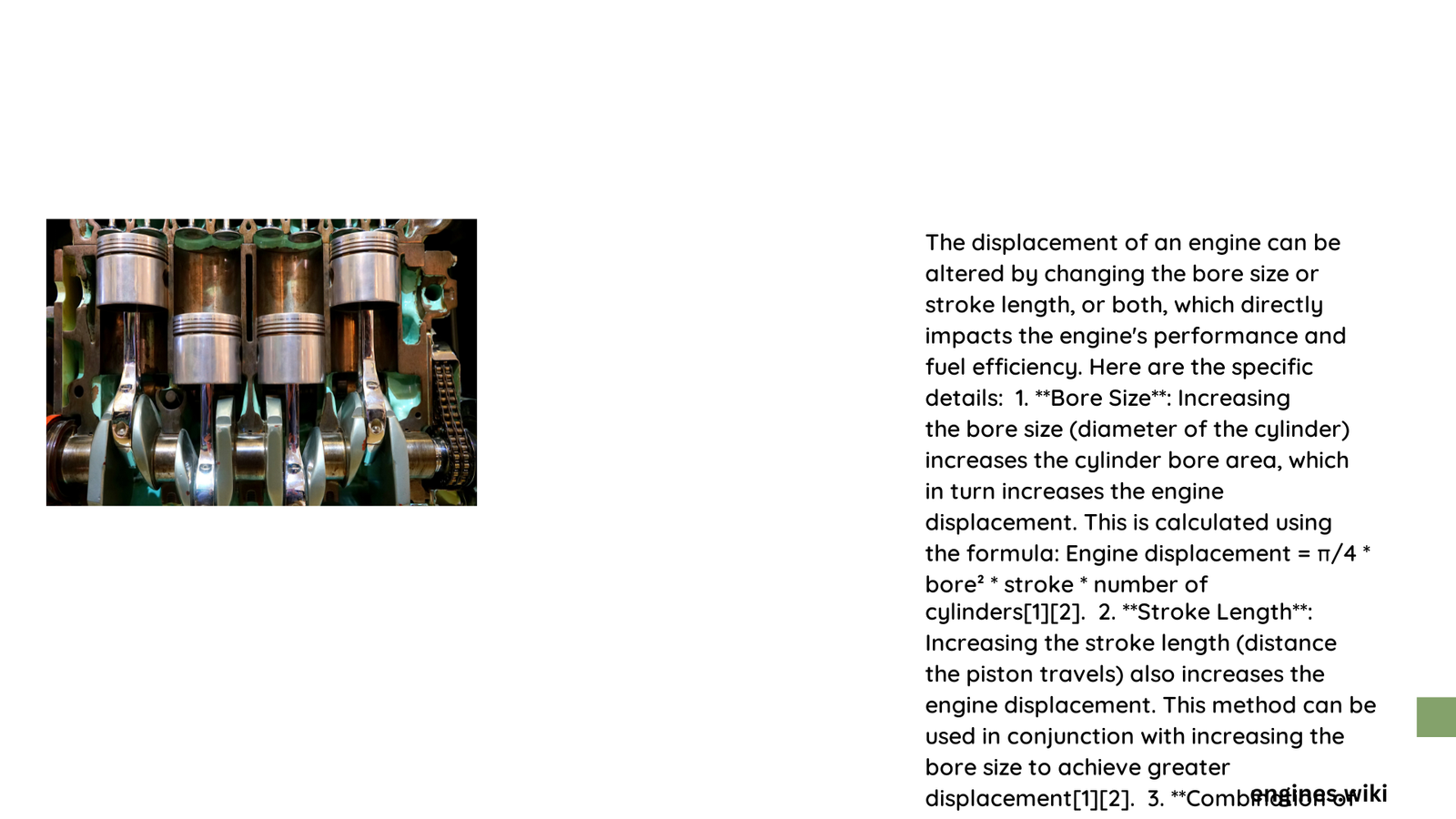Engine displacement represents the total volume of all cylinders in an internal combustion engine, which can be strategically modified by altering fundamental geometric parameters. By precisely changing the bore diameter and stroke length, automotive engineers and performance enthusiasts can significantly transform an engine’s fundamental characteristics, affecting power output, efficiency, and overall mechanical performance.
What Determines Engine Displacement?
Engine displacement is fundamentally calculated through a mathematical relationship between three critical parameters:
– Bore diameter
– Stroke length
– Number of cylinders
How Can Bore Diameter Impact Displacement?
The bore diameter directly influences engine displacement through its squared relationship in the calculation formula. Consider these key insights:
| Bore Diameter Change | Displacement Impact | Performance Implications |
|---|---|---|
| Increase 1-2 mm | 3-5% Volume Increase | Potential power gain |
| Decrease 1-2 mm | 3-5% Volume Decrease | Reduced engine capacity |
Mathematical Representation
The precise formula for calculating displacement is:
[ V = \left( \frac{\pi}{4} \right) b^2 s n_c ]
Where:
– ( V ) = Total engine displacement
– ( b ) = Bore diameter
– ( s ) = Stroke length
– ( n_c ) = Number of cylinders
What Role Does Stroke Length Play?
Stroke length provides a linear contribution to displacement calculations. Modifications include:
- Longer Stroke
- Increases total displacement
- Enhances low-end torque
-
Potentially reduces maximum RPM
-
Shorter Stroke
- Decreases total displacement
- Improves high-RPM performance
- Allows faster engine acceleration
What Technical Challenges Emerge During Modification?
Changing engine displacement involves complex engineering considerations:
- Cost Implications
- New pistons: $500 – $2,000
- Machining services: $1,000 – $3,000
-
Potential block modifications: $2,000 – $5,000
-
Required Precision Tools
- Bore gauge
- Micrometer
- Engine block measuring equipment
- Specialized machining tools
Practical Example: Chevrolet Small Block V8 Transformation
Original Configuration:
– Bore: 4.00 inches
– Stroke: 3.48 inches
– Displacement: 349.67 cubic inches
Modified Configuration:
– Bore: 4.030 inches
– Stroke: 3.75 inches
– New Displacement: 377.4 cubic inches
What Performance Outcomes Can Be Expected?
Performance modifications through displacement changes typically result in:
– Increased horsepower
– Enhanced torque characteristics
– Potential fuel efficiency adjustments
– Altered engine breathing dynamics
Critical Considerations Before Modification

- Consult professional engine builders
- Verify component compatibility
- Consider long-term reliability
- Understand legal and warranty implications
Precision Matters
Successful engine displacement modification requires:
– Millimeter-level accuracy
– Comprehensive understanding of mechanical interactions
– Advanced computational modeling
– Extensive testing protocols
Conclusion
Engine displacement modification represents a sophisticated engineering process demanding technical expertise, precise calculations, and comprehensive understanding of mechanical systems.
